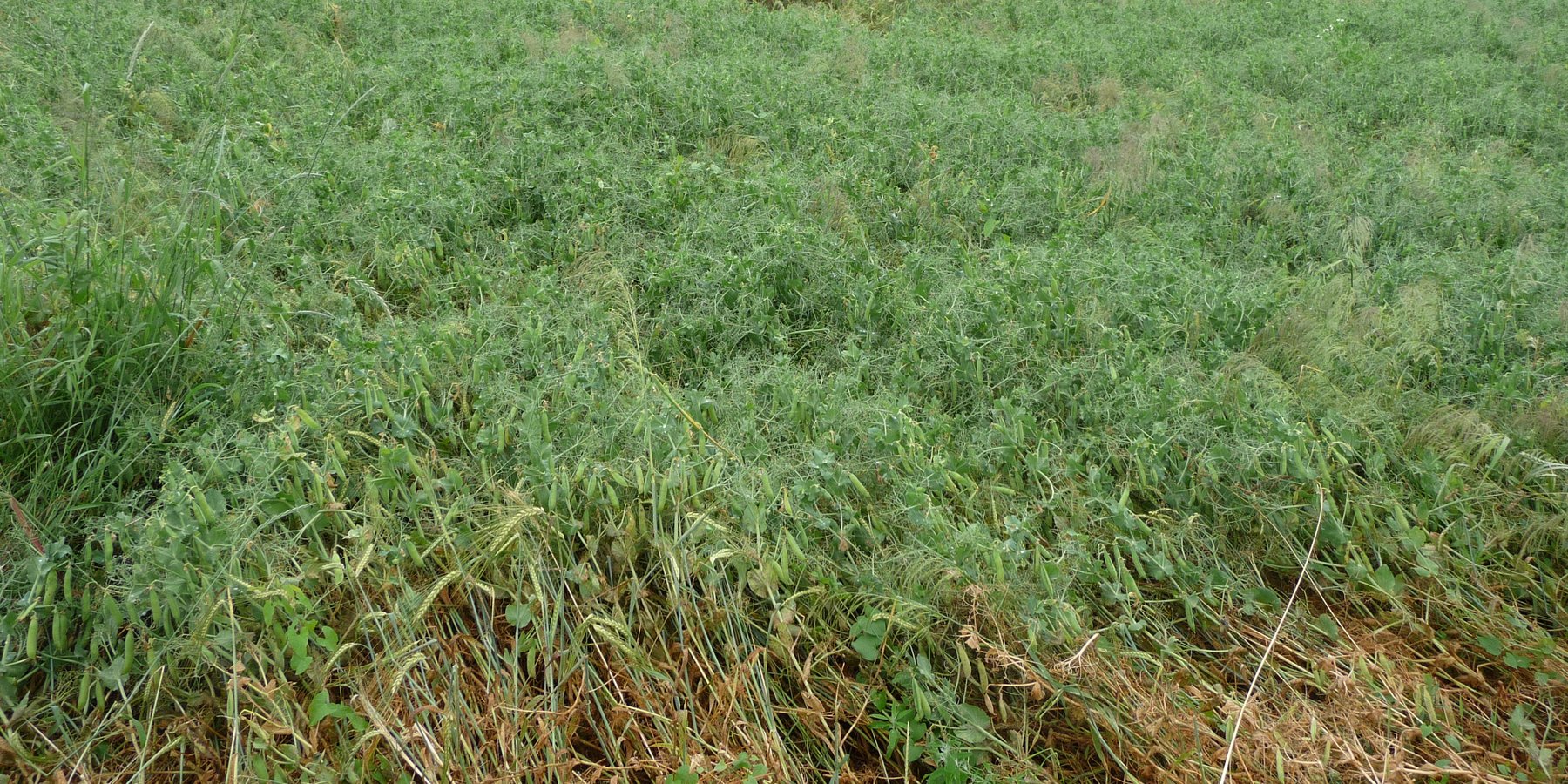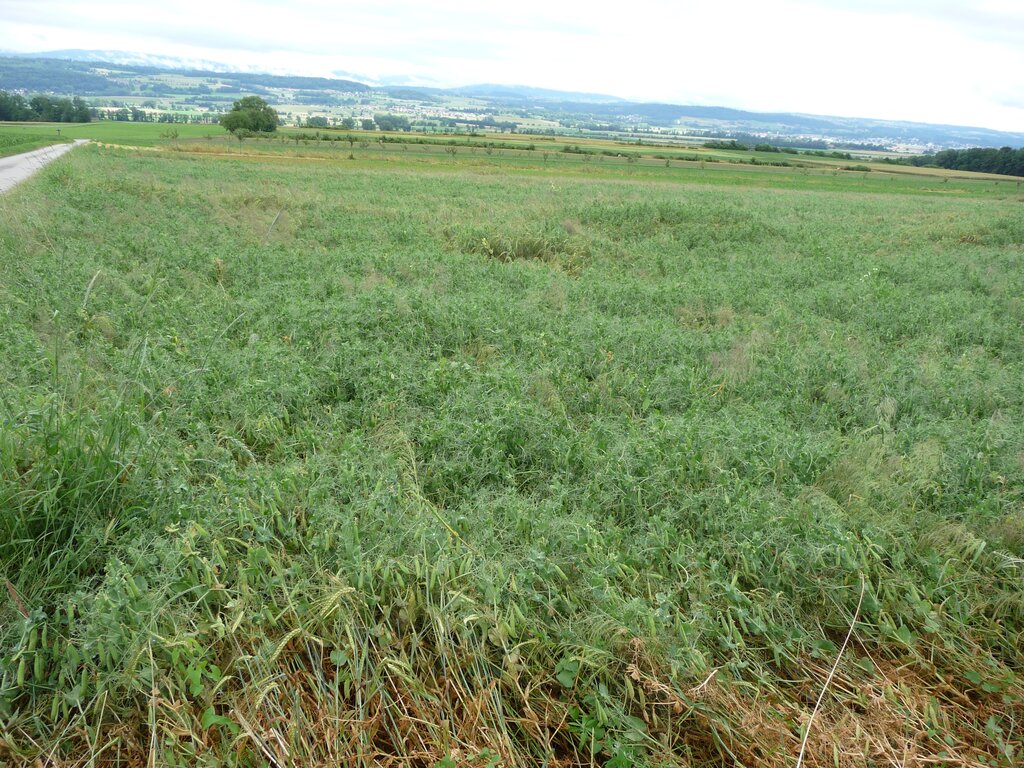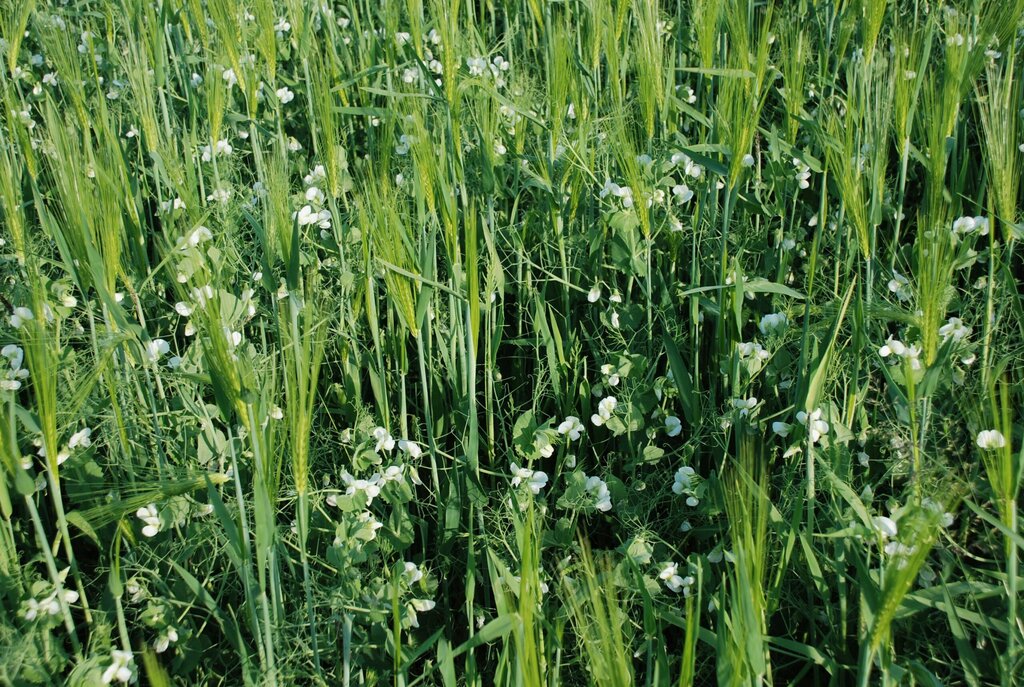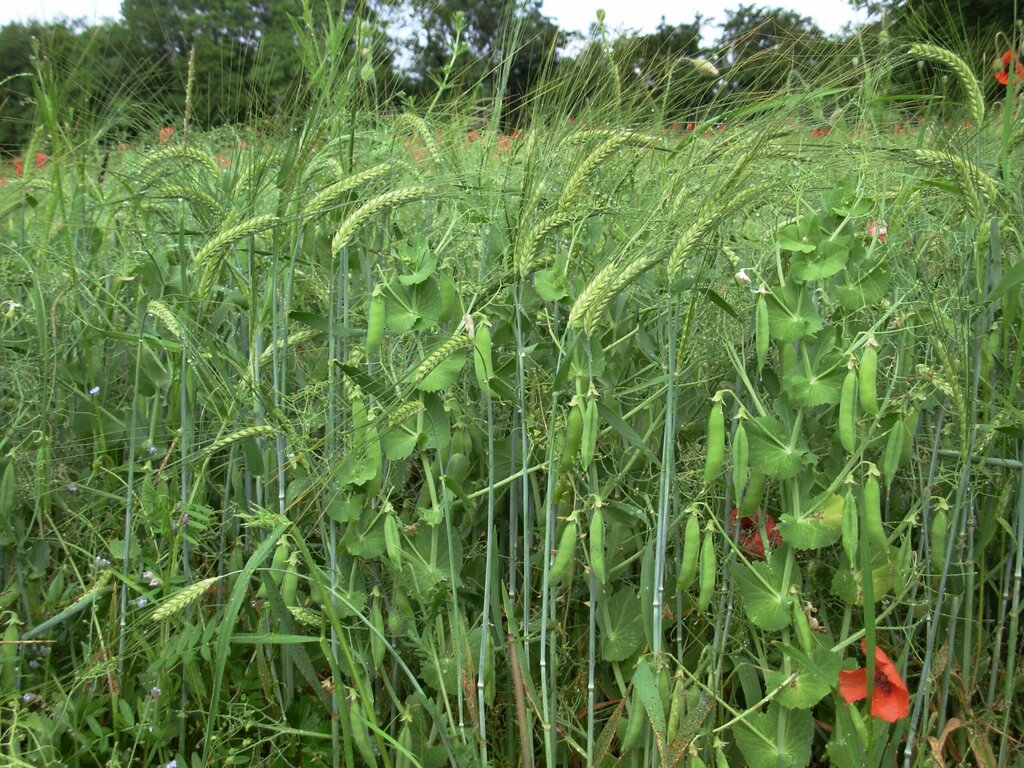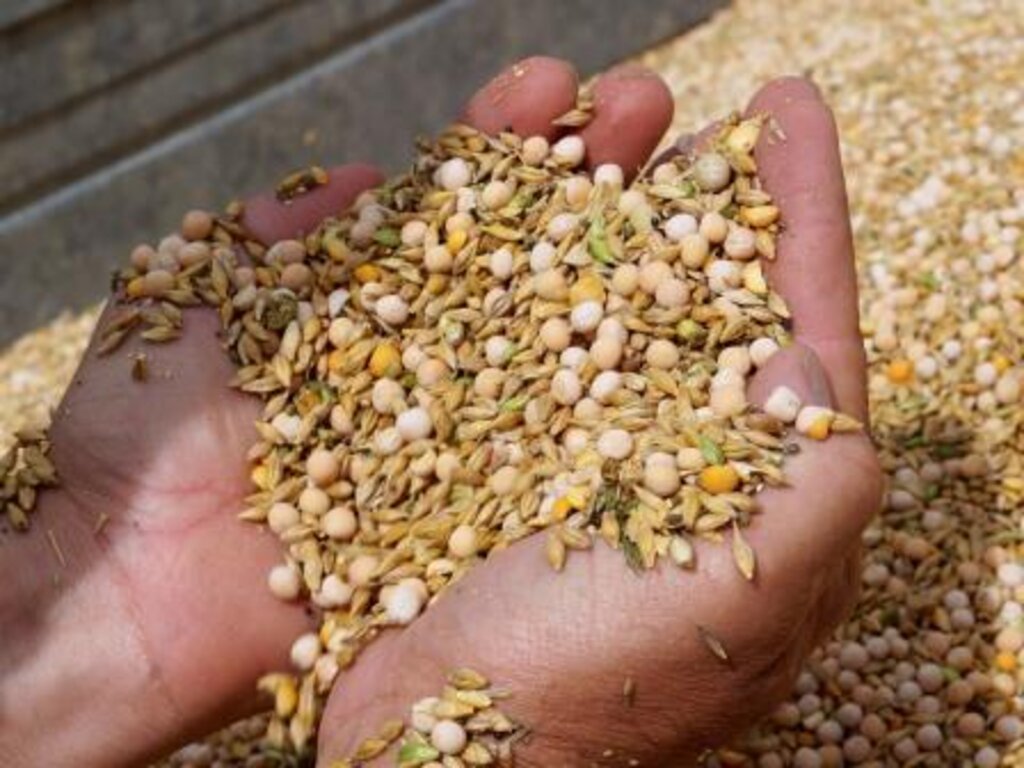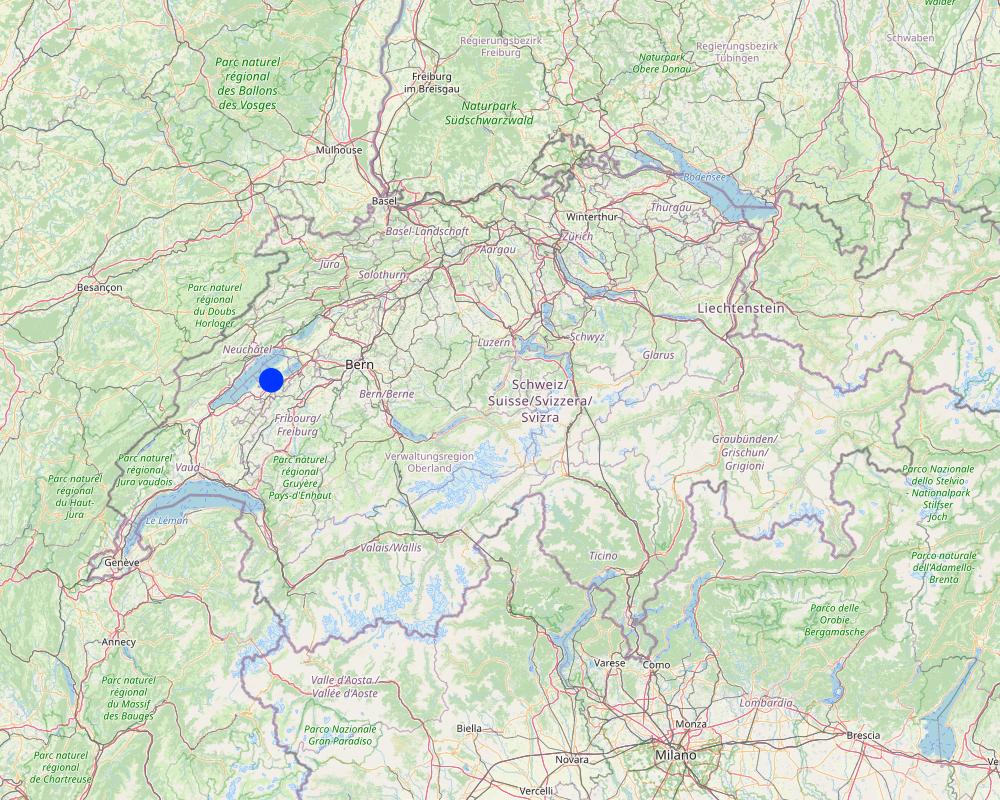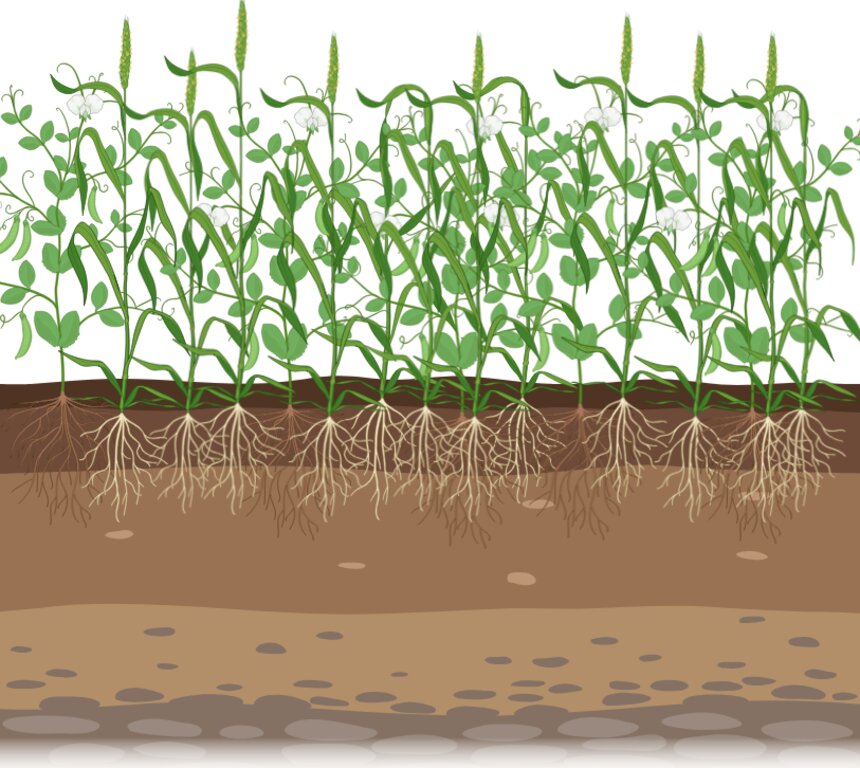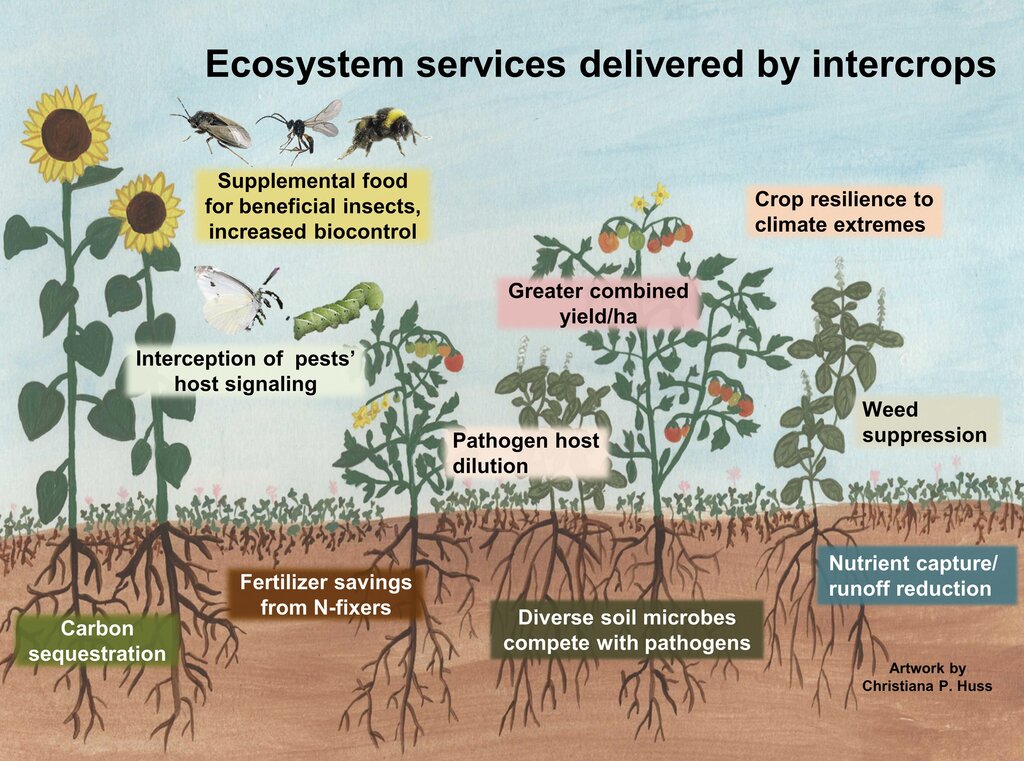Intercropping of grain legumes with cereals [ສະວິດເຊີແລນ]
- ການສ້າງ:
- ປັບປູງ:
- ຜູ້ສັງລວມຂໍ້ມູນ: Basile Brunner
- ບັນນາທິການ: Maria Eliza Turek, Tatenda Lemann, Joana Eichenberger
- ຜູ້ທົບທວນຄືນ: William Critchley, Joana Eichenberger
Mischkultur von Körnerleguminosen und Getreide
technologies_6235 - ສະວິດເຊີແລນ
ເບິ່ງພາກສ່ວນ
ຂະຫຍາຍທັງໝົດ ຍຸບທັງໝົດ1. ຂໍ້ມູນທົ່ວໄປ
1.2 ຂໍ້ມູນ ການຕິດຕໍ່ພົວພັນ ຂອງບຸກຄົນທີ່ສໍາຄັນ ແລະ ສະຖາບັນ ທີ່ມີສ່ວນຮ່ວມ ໃນການປະເມີນເອກກະສານ ເຕັກໂນໂລຢີ
ບັນດາຜູ້ຕອບແບບສອບຖາມທີ່ສໍາຄັນ ()
ຜູ້ນໍາໃຊ້ທີ່ດິນ:
Quillet Lucien
ສະວິດເຊີແລນ
ຜຸ້ຊ່ຽວຊານ ດ້ານການຄຸ້ມຄອງ ທີ່ດິນແບບຍືນຍົງ:
Klaiss Matthias
Research Institute of Organic Agriculture FiBL
ສະວິດເຊີແລນ
ຊື່ໂຄງການ ທີ່ອໍານວຍຄວາມສະດວກ ໃນການສ້າງເອກກະສານ/ປະເມີນ ເຕັກໂນໂລຢີ (ຖ້າກ່ຽວຂ້ອງ)
OPtimal strategies to retAIN and re-use water and nutrients in small agricultural catchments across different soil-climatic regions in Europe (OPTAIN)ຊື່ສະຖາບັນ (ຫຼາຍສະຖາບັນ) ທີ່ອໍານວຍຄວາມສະດວກ ໃນການສ້າງເອກກະສານ / ປະເມີນ ເຕັກໂນໂລຢີ (ຖ້າກ່ຽວຂ້ອງ)
CDE Centre for Development and Environment (CDE Centre for Development and Environment) - ສະວິດເຊີແລນ1.3 ເງື່ອນໄຂ ກ່ຽວກັບ ການນໍາໃຊ້ຂໍ້ມູນເອກະສານ ທີ່ສ້າງຂື້ນ ໂດຍຜ່ານ ອົງການພາບລວມຂອງໂລກ ທາງດ້ານແນວທາງ ແລະ ເຕັກໂນໂລຢີ ຂອງການອານຸລັກ ທໍາມະຊາດ (WOCAT)
ຜູ້ປ້ອນຂໍ້ມູນ ແລະ ບຸກຄົນສຳຄັນ ທີ່ໃຫ້ຂໍ້ມູນ (ຫຼາຍ) ຍິນຍອມ ຕາມເງື່ອນໄຂ ໃນການນຳໃຊ້ຂໍ້ມູນ ເພື່ອສ້າງເປັນເອກກະສານຂອງ WOCAT:
ແມ່ນ
1.4 ແຈ້ງການວ່າ ດ້ວຍຄວາມຍືນຍົງຂອງ ເຕັກໂນໂລຢີ
ການນໍາໃຊ້ ເຕັກໂນໂລຢີ ດັ່ງກ່າວໄດ້ອະທິບາຍ ເຖິງບັນຫາ ກ່ຽວກັບ ການເຊື່ອມໂຊມຂອງດິນບໍ? ຖ້າບໍ່ດັ່ງນັ້ນ ມັນບໍ່ສາມາດ ຢັ້ງຢືນໄດ້ວ່າ ເປັນເຕັກໂນໂລຊີ ໃນການຄຸ້ມຄອງ ທີ່ດິນແບບຍືນຍົງ? :
ບໍ່ແມ່ນ
2. ການອະທິບາຍ ເຕັກໂນໂລຢີ ຂອງການຄຸ້ມຄອງ ທີ່ດິນແບບຍືນຍົງ
2.1 ຄໍາອະທິບາຍສັ້ນຂອງ ເຕັກໂນໂລຢີ
ການກຳໜົດຄວາມໝາຍ ຂອງເຕັກໂນໂລຢີ:
Intercropping of grain legumes with cereals is a sustainable agricultural practice in Swiss farming. This involves growing grain legumes (such as peas or beans) alongside cereal crops (like barley or wheat) in the same field, reducing crop failure or yield risk, stabilising the grain legumes, promoting biodiversity and enhancing overall crop yield.
2.2 ການອະທິບາຍ ລາຍລະອຽດ ຂອງເຕັກໂນໂລຢີ
ການພັນລະນາ:
Intercropping of grain legumes with cereals is practised in the Broye catchment area, which covers the cantons of Vaud and Fribourg in Switzerland. The area is characterised by mixed dairy and arable production in the hills and predominantly arable production in the lowlands. The area has an average annual rainfall of 865 mm, an average temperature of 9.6°C and significant agricultural activity relies on irrigation from local rivers.
Intercropping is the simultaneous cultivation of two or more crops in the same field. In this case, grain legumes (such as peas, lupins or faba beans) are grown alongside cereals (such as barley, oats or wheat). The crops are sown together in a pre-prepared mixture, usually at a ratio of 65% legumes to 35% cereals by weight, compared to the standard weight sown in monoculture (100%). The seeds are fully mixed and sown in the same row. Crops are grown over the winter and harvested simultaneously in the spring, which requires compatible combinations whose breeding is continuously optimised for simultaneous ripening. The standard practice in Switzerland is to use a cereal plus a legume.
The main purpose of intercropping grain legumes with cereals is to increase ecological resilience and improve soil fertility. Including legumes in rotations significantly improves soil nitrogen levels, reducing the need for synthetic fertilisers. Intercropping also increases water infiltration, reduces runoff and increases biodiversity. The increase in biodiversity is small in terms of the overall biodiversity of agricultural land (e.g. soil micro-organisms, pollinators). The number of crops grown remains relatively constant. The practice aims to produce higher yields on a given piece of land by using resources that would otherwise not be used by a single crop. The overall yield is higher, although land equivalent ratios (LER) were not measured in this study. However, a cited paper (Chapagain & Riseman, 2014) shows that intercropping barley with peas can increase land productivity by 12-32% compared to monoculture plots, with a 2:1 arrangement producing the highest total land outputs and LER values.
Establishing and maintaining intercropping requires several key activities and inputs: (1) Use of tractors and seed drills for planting and harvesting intercrops. (2) Regular weeding, especially in fields with crops such as soy. (3) Episodic irrigation with water from local irrigation syndicates. (4) Minimal use of fertiliser and homemade manure to maintain soil health.
Intercropping has many benefits: (1) Increases biodiversity, improves soil fertility and increases water infiltration. (2) Reduces the need for synthetic fertilisers, making it economically viable for farmers. (3) Improves drought resistance and reduces the risk of crop failure. (4) Contributes to better water management and resilience to climate change. (5) Surface erosion is reduced by the greater cover of mixed crops (leaf area index).
Farmers appreciate the effectiveness of intercropping in achieving yields similar to monocultures, while adding the benefits of cereals. They also value the reduced need for synthetic fertilisers and improved soil health. However, challenges include seed selection and segregation, particularly for crops such as wheat and faba beans, and weed management in certain fields.
2.3 ຮູບພາບຂອງເຕັກໂນໂລຢີ
2.5 ປະເທດ / ເຂດ / ສະຖານທີ່ບ່ອນທີ່ ເຕັກໂນໂລຢີ ໄດ້ຮັບການນໍາໃຊ້ ແລະ ທີ່ຖືກປົກຄຸມດ້ວຍການປະເມີນຜົນ
ປະເທດ:
ສະວິດເຊີແລນ
ພາກພື້ນ / ລັດ / ແຂວງ:
Missy / Vaud / Switzerland
ໃຫ້ລະບຸ ການແຜ່ຂະຫຍາຍ ເຕັກໂນໂລຢີ:
- ແຜ່ຂະຫຍາຍຢ່າງໄວວາໃນພື້ນທີ່
ສ່ວນຫຼາຍສະຖານທີ່ຕັ້ງຂອງເຕັກໂນໂລຢີ ແມ່ນ ຢູ່ໃນເຂດພື້ນທີ່ສະຫງວນບໍ?
ບໍ່ແມ່ນ
Map
×2.6 ວັນທີໃນການຈັດຕັ້ງປະຕິບັດ
ຖ້າຫາກວ່າ ບໍ່ຮູ້ຈັກ ປີທີ່ຊັດເຈນ ແມ່ນໃຫ້ປະມານ ວັນທີເອົາ:
- 10-50 ປີ ຜ່ານມາ
2.7 ການນໍາສະເໜີ ເຕັກໂນໂລຢີ
ໃຫ້ລະບຸ ເຕັກໂນໂລຢີ ໄດ້ຖືກຈັດຕັ້ງປະຕິບັດຄືແນວໃດ?
- ໃນໄລຍະການທົດລອງ / ການຄົ້ນຄວ້າ
ຄວາມຄິດເຫັນ (ປະເພດ ໂຄງການ ແລະ ອື່ນໆ):
Only one farmer was interviewed who practices mixed cropping on 4 ha.
3. ການໃຈ້ແຍກ ເຕັກໂນໂລຢີ ໃນການຄຸ້ມຄອງ ດິນແບບຍືນຍົງ
3.1 ຈຸດປະສົງຫຼັກ (ຫຼາຍ) ຂອງເຕັກໂນໂລຢີ
- ປັບປຸງ ການຜະລິດ
- ປັບຕົວຕໍ່ກັບການປ່ຽນແປງດິນຟ້າອາກາດ / ທີ່ຮ້າຍແຮງ ແລະ ຜົນກະທົບ
- ສ້າງຜົນກະທົບ ທາງເສດຖະກິດ ທີ່ເປັນປະໂຫຍດ
3.2 ປະເພດການນໍາໃຊ້ທີ່ດິນ ໃນປະຈຸບັນ() ທີ່ເຕັກໂນໂລຢີ ໄດ້ຖືກນໍາໃຊ້
ການນຳໃຊ້ທີ່ດິນ ປະສົມພາຍໃນພື້ນທີ່ດຽວກັນ:
ບໍ່ແມ່ນ

ດິນທີ່ປູກພືດ
- ການປູກພືດປະຈໍາປີ
ການປູກພືດປະຈຳປີ - ລະບຸປະເພດພືດ:
- ທັນຍາພືດ-ເຂົ້າບາເລ້
- ທັນຍາພືດ-ເຂົ້າໂອດ
- ພືດຕະກູນຖົ່ວ ແລະ ຖົ່ວປະເພດອື່ນໆ
- ພືດຕະກູນຖົ່ວ ແລະ ຖົ່ວແປກ
- Lupine (legume)
ຈໍານວນ ລະດູການ ປູກໃນປີໜຶ່ງ:
- 1
ມີການເຝືກປູກພືດແບບສັບຫວ່າງບໍ່?
ແມ່ນ
ຖ້າມີ, ໃຫ້ລະບຸວ່າປູກພືດຊະນິດໃດທີ່ປູກສັບຫວ່າງ:
Pea - barley, and lupine - oat
ມີການເຝືກປູກພືດແບບໝູນວຽນບໍ່?
ແມ່ນ
ຖ້າແມ່ນ, ໃຫ້ລະບຸແຈ້ງ:
field rotation is as follows: cereals, legumes or maize, cereals, legumes or maize ... And every six years, two successive legumes/maize
3.3 ການນຳໃຊ້ທີ່ດິນ ມີການປ່ຽນແປງຍ້ອນການຈັດຕັ້ງທົດລອງເຕັກໂນໂລຢີ ແມ່ນບໍ່?
ການນຳໃຊ້ທີ່ດິນ ມີການປ່ຽນແປງຍ້ອນການຈັດຕັ້ງທົດລອງເຕັກໂນໂລຢີ ແມ່ນບໍ່?
- ບໍ່ (ຕໍ່ເໜືອງກັບ ຄຳຖາມ 3.4)
3.4 ການສະໜອງນ້ຳ
ການສະໜອງນໍ້າ ໃນພື້ນທີ່ ທີ່ໄດ້ນໍາໃຊ້ ເຕັກໂນໂລຢີ:
- ປະສົມປະສານ ກັນລະຫວ່າງ ນໍ້າຝົນ ແລະ ນໍ້າຊົນລະປະທານ
ຄວາມຄິດເຫັນ:
All the plots on the farm are connected to a stream. The farmer tries to irrigate as little as possible, as it's time consuming and expensive. As there was enough rain this year, there was no need to irrigate the fields.
3.5 ການນໍາໃຊ້ເຕັກໂນໂລຢີ ທີ່ຢູ່ໃນກຸ່ມການຄຸ້ມຄອງ ທີ່ດິນແບບຍືນຍົງ
- ການປັບປຸງດິນ / ພືດຄຸມດິນ
- ການຈັດການອຸດົມສົມບູນ ຂອງດິນປະສົມປະສານ
- ການປັບປຸງແນວພັນພືດ / ແນວພັນສັດ
3.6 ມາດຕະການ ການຄຸ້ມຄອງ ທີ່ດິນແບບຍືນຍົງ ປະກອບດ້ວຍ ເຕັກໂນໂລຢີ

ມາດຕະການ ທາງການກະສິກໍາ
- A1: ພືດ / ການປົກຫຸ້ມຂອງດິນ
- A2: ອິນຊີວັດຖຸ ຫຼື ຄວາມອຸດົມສົມບູນໃນດິນ
- A5: ການຈັດການ ແລະ ການປັບປຸງແກ່ນເມັດພັນ ແລະ ແນວພັນ
3.7 ປະເພດດິນເຊື່ອມໂຊມ ຫຼັກທີ່ໄດ້ນໍາໃຊ້ ເຕັກໂນໂລຢີ

ດິນເຊາະເຈື່ອນ ໂດຍນໍ້າ
- Wt: ການສູນເສຍຊັ້ນໜ້າດິນ / ການເຊາະເຈື່ອນຜິວໜ້າດິນ
3.8 ການປ້ອງກັນ, ການຫຼຸດຜ່ອນ, ຫຼືການຟື້ນຟູຂອງການເຊື່ອມໂຊມຂອງດິນ
ໃຫ້ລະບຸ ເປົ້າໝາຍ ເຕັກໂນໂລຢີ ທີ່ພົວພັນ ກັບຄວາມເຊື່ອມໂຊມຂອງດິນ:
- ປ້ອງກັນການເຊື່ອມໂຊມຂອງດິນ
4. ຂໍ້ກໍາໜົດ, ກິດຈະກໍາການປະຕິບັດ, ວັດຖຸດິບ, ແລະຄ່າໃຊ້ຈ່າຍ
4.1 ເຕັກນິກ ໃນການແຕ້ມແຜນວາດ ເຕັກໂນໂລຢີ
ຄຸນລັກສະນະ ຂອງເຕັກນິກ (ທີ່ກ່ຽວຂ້ອງ ກັບການແຕ້ມແຜນວາດ ທາງດ້ານເຕັກນີກ):
The illustration shows a field where peas and barley are grown together in a mixed cropping system. The plants with rounded leaves and tendrils are peas, while the taller plants with linear leaves are barley. The interviewed farmer typically grows these crops on an area of two to three hectares. The mixed crops are at an advanced stage of growth, several weeks before harvest, with both pea and barley producing seed. The rooting depth of the pea plants can reach up to 110 centimetres, while the barley plants can extend their roots up to 150 centimetres under optimal conditions.
These plants grow on brown soil composed of three main horizons. Horizon A is usually brownish in colour and extends to a depth of over 20 cm. It is rich in organic matter and mineral particles, making it biologically active with many soil organisms and plant roots. The B horizon is lighter in colour and typically extends from about 20 cm to 150 cm deep. It contains minerals leached from the A horizon and shows signs of weathering, with a more defined structure due to the accumulation of minerals and organic matter from the upper layers. The C horizon, or parent material, lies below the B horizon and extends beyond 150 cm. It consists of partially disintegrated and weathered parent material, is typically lighter in colour than the B horizon and has minimal biological activity compared to the upper layers.
ຜູ້ຂຽນ:
Basile Brunner (UniBE)
ວັນທີ:
15/08/2024
ຄຸນລັກສະນະ ຂອງເຕັກນິກ (ທີ່ກ່ຽວຂ້ອງ ກັບການແຕ້ມແຜນວາດ ທາງດ້ານເຕັກນີກ):
llustration of benefits of intercropping for crop resilience and crop yields, management of soils, weeds, pests, and pathogens, along with environmental benefits of carbon sequestration and reduction of fossil fuel inputs.
ຜູ້ຂຽນ:
Christiana Huss
ວັນທີ:
22/04/2022
4.2 ຂໍ້ມູນທົ່ວໄປກ່ຽວກັບການຄິດໄລ່ປັດໃຈຂາເຂົ້າໃນການຜະລິດ ແລະ ມູນຄ່າອື່ນໆ
ລະບຸ ວິທີການ ຄຳໃຊ້ຈ່າຍ ແລະ ປັດໄຈນໍາເຂົ້າ ທີ່ໄດ້ຄິດໄລ່:
- ຕໍ່ພື້ນທີ່ ທີ່ໄດ້ຈັດຕັ້ງປະຕິບັດ ເຕັກໂນໂລຢີ
ໃຫ້ລະບຸຫົວໜ່ວຍ ຂະໜາດ ແລະ ເນື້ອທີ່:
ha
ສະກຸນເງິນອື່ນໆ / ປະເທດອື່ນໆ (ລະບຸ):
CHF
ຖ້າກ່ຽວຂ້ອງ, ໃຫ້ລະບຸອັດຕາແລກປ່ຽນຈາກ USD ເປັນສະກຸນເງິນທ້ອງຖິ່ນ (ເຊັ່ນ: 1 USD = 79.9 Brazilian Real): 1 USD =:
1.13
ລະບຸ ຄ່າຈ້າງ ຄ່າແຮງງານສະເລ່ຍ ຕໍ່ ວັນ:
240 CHF
4.5 ບໍາລຸງຮັກສາ / ແຜນຈັດຕັ້ງປະຕິບັດ ກິດຈະກໍາ
| ກິດຈະກໍາ | ໄລຍະເວລາ / ຄວາມຖີ່ | |
|---|---|---|
| 1. | Mixing seeds: For single tank seeders, mix seeds at a ratio of 80% peas and 40% barley. For multi-tank seeders, apply seeds of mixture partners separately. | Before sowing, typically in late summer. |
| 2. | Sowing: Use a row spacing of 12 cm, and place seeds at a depth of 3 to 4 cm. | late october |
| 3. | Assess the mix’s condition after winter. | Spring, depending on winter severity. |
| 4. | Weed Control: Generally not needed due to the competitive nature of the mixed crop. If high weed pressure: Consider harrowing once (2-3 hours per hectare for weeding). | Spring, depending on winter severity. |
| 5. | Harvesting: Adjust harvester sieves for peas. Open threshing concave and hulling bars wide. Maintain low drum rotation. Monitor for grain loss regularly. Adjust Vario-table to an aggressive cutting angle. | Summer. |
ຄວາມຄິດເຫັນ:
Maintenance activities for a mixed intercropping culture of winter peas/barley.
Cultivate the mixed crop only every seventh year in crop rotation. Avoid growing lupins, vetches, lucerne, or pure stands of red clover in between. No nitrogen fertilisation. Irrigation only in very dry years.
4.6 ຄ່າໃຊ້ຈ່າຍ ແລະ ປັດໄຈນໍາເຂົ້າທີ່ຈໍາເປັນສໍາລັບການບໍາລຸງຮັກສາກິດຈະກໍາ / ແຜນປະຕິບັດ (ຕໍ່ປີ)
| ລະບຸ ປັດໃຈ ນໍາເຂົ້າ ໃນການຜະລີດ | ຫົວໜ່ວຍ | ປະລິມານ | ຕົ້ນທຶນ ຕໍ່ຫົວໜ່ວຍ | ຕົ້ນທຶນທັງໝົດ ຂອງປັດໃຈຂາເຂົ້າ ໃນການຜະລິດ | % ຂອງຕົ້ນທຶນທັງໝົດ ທີ່ຜູ້ນໍາໃຊ້ທີ່ດິນ ໃຊ້ຈ່າຍເອງ | |
|---|---|---|---|---|---|---|
| ແຮງງານ | Ploughing | person-days | 1.0 | 200.0 | 200.0 | 100.0 |
| ແຮງງານ | Sowing the Mixture | person-days | 1.0 | 200.0 | 200.0 | 100.0 |
| ແຮງງານ | Weeding | person-hours | 3.0 | 23.0 | 69.0 | 100.0 |
| ອຸປະກອນ | seeder | piece | 1.0 | 10000.0 | 10000.0 | 100.0 |
| ອຸປະກອນ | tractor | piece | 1.0 | 30000.0 | 30000.0 | 100.0 |
| ອຸປະກອນ | harvester | piece | 1.0 | 15000.0 | 15000.0 | 100.0 |
| ອຸປະກອນ | plough | piece | 1.0 | 15000.0 | 15000.0 | 100.0 |
| ວັດສະດຸໃນການປູກ | Seed mixture protein peas / barley mixture (autumn sowing) organic | kg/ha | 200.0 | 6.0 | 1200.0 | 100.0 |
| ຕົ້ນທຶນທັງໝົດ ທີ່ໃຊ້ໃນການບໍາລຸງຮັກສາ ເຕັກໂນໂລຢີ | 71669.0 | |||||
| ຄ່າໃຊ້ຈ່າຍທັງໝົດ ສຳລັບການບົວລະບັດຮກສາເຕັກໂນໂລຢີ ເປັນສະກຸນເງີນໂດລາ | 63423.89 | |||||
ຄວາມຄິດເຫັນ:
Normal machinery (tractor, seeder, harvester) can be used. In many cases it is already available on the farm.
Weed control is usually not needed. If there is high weed pressure, harrow or hoe it once.
No nitrogen fertilising for the crop. Irrigation would only be needed in an extremely dry year.
In order to avoid legume fatigue in the soil, only cultivate the mixed crop every seventh year. Also do not grow lupins, vetches, Lucerne or pure stands of red clover in between.
4.7 ປັດໄຈ ທີ່ສໍາຄັນ ທີ່ສົ່ງຜົນກະທົບ ຕໍ່ຄ່າໃຊ້ຈ່າຍ
ໃຫ້ອະທິບາຍ ປັດໃຈ ທີ່ສົ່ງຜົນກະທົບ ຕໍ່ຕົ້ນທຶນ ໃນການຈັດຕັ້ງປະຕິບັດ:
No exceptional investments are needed as existing machines are used.
The cost of seeds and the seed sorting costs by the mills.
Time and labour required for weeding, which can vary based on crop type.
The demand and price for the crops grown. E.g. soy having higher demand and price compared to peas.
5. ສະພາບແວດລ້ອມທໍາມະຊາດ ແລະ ມະນຸດ
5.1 ອາກາດ
ປະລິມານນໍ້າຝົນປະຈໍາປີ
- < 250 ມີລິແມັດ
- 251-500 ມີລິແມັດ
- 501-750 ມີລິແມັດ
- 751-1,000 ມີລິແມັດ
- 1,001-1,500 ມີລິແມັດ
- 1,501-2,000 ມີລິແມັດ
- 2,001-3,000 ມີລິແມັດ
- 3,001-4,000 ມີລິແມັດ
- > 4,000 ມີລິແມັດ
ໃຫ້ລະບຸສະເລ່ຍ ປະລິມານນໍ້າຝົນຕົກປະຈໍາປີ ເປັນມິນລິແມັດ (ຖ້າຫາກຮູ້ຈັກ):
865.00
ໃຫ້ລະບຸ ຊື່ສະຖານີ ອຸຕຸນິຍົມ ເພື່ອເປັນຂໍ້ມູນອ້າງອີງ:
Payerne
ເຂດສະພາບອາກາດກະສິກໍາ
- ເຄີ່ງຄວາມຊຸ່ມ
average maximum temperature 14.2°C, average minimum temperature 5.1°C
5.2 ພູມິປະເທດ
ຄ່າສະເລ່ຍ ຄວາມຄ້ອຍຊັນ:
- ພື້ນທີ່ຮາບພຽງ (0-2%)
- ອ່ອນ (3-5 %)
- ປານກາງ (6-10 %)
- ມ້ວນ (11-15 %)
- ເນີນ(16-30%)
- ໍຊັນ (31-60%)
- ຊັນຫຼາຍ (>60%)
ຮູບແບບຂອງດິນ:
- ພູພຽງ / ທົ່ງພຽງ
- ສັນພູ
- ເປີ້ນພູ
- ເນີນພູ
- ຕີນພູ
- ຮ່ອມພູ
ເຂດລະດັບສູງ:
- 0-100 ແມັດ a.s.l.
- 101-500 ແມັດ a.s.l.
- 501-1,000 ແມັດ a.s.l.
- 1,001-1,500 ແມັດ a.s.l.
- 1,501-2,000 ແມັດ a.s.l.
- 2,001-2,500 ແມັດ a.s.l.
- 2,501-3,000 ແມັດ a.s.l.
- 3,001-4,000 ແມັດ a.s.l.
- > 4,000 ແມັດ a.s.l.
ໃຫ້ລະບຸ ເຕັກໂນໂລຢີ ທີ່ໄດ້ຖືກນຳໃຊ້:
- ບໍ່ກ່ຽວຂ້ອງ
5.3 ດິນ
ຄວາມເລິກ ຂອງດິນສະເລ່ຍ:
- ຕື້ນຫຼາຍ (0-20 ຊັງຕີແມັດ)
- ຕື້ນ (21-50 ຊຕມ)
- ເລີກປານກາງ (51-80 ຊຕມ)
- ເລິກ (81-120 ຊມ)
- ເລິກຫຼາຍ (> 120 cm)
ເນື້ອດິນ (ໜ້າດິນ):
- ບາງລະອຽດ / ໜັກ (ໜຽວ)
ເນື້ອດິນ (ເລິກຈາກໜ້າດິນ ລົງໄປຫຼາຍກວ່າ 20 ຊັງຕິແມັດ):
- ບາງລະອຽດ / ໜັກ (ໜຽວ)
ຊັ້ນອິນຊີວັດຖຸ ເທິງໜ້າດິນ:
- ປານກາງ (1-3 %)
5.4 ມີນໍ້າ ແລະ ຄຸນນະພາບ
ລະດັບ ນໍ້າໃຕ້ດິນ:
< 5 ແມັດ
ການມີນໍ້າ ເທິງໜ້າດິນ:
ດີ
ຄຸນນະພາບນໍ້າ (ບໍ່ມີການບໍາບັດ):
ນຳໃຊ້ເຂົ້າໃນການຜະລິດກະສິກໍາພຽງຢ່າງດຽງ (ຊົນລະປະທານ)
ຄຸນນະພາບນ້ຳ ໝາຍເຖີງ:
ນ້ຳໜ້າດິນ
ມີບັນຫາ ກ່ຽວກັບນໍ້າເຄັມບໍ່?
ບໍ່ແມ່ນ
ເກີດມີນໍ້າຖ້ວມ ໃນພື້ນທີ່ບໍ່?
ແມ່ນ
ເປັນປົກກະຕິ:
ຕອນ
ຄວາມຄິດເຫັນ ແລະ ຂໍ້ກໍານົດ ເພີ່ມເຕີມ ກ່ຽວກັບ ຄຸນນະພາບ ແລະ ປະລິມານ ຂອງນ້ຳ:
The increasing threat of heavy rainfall events due to climate change enhances the threat of flooding.
5.5 ຊີວະນາໆພັນ
ຄວາມຫຼາກຫຼາຍ ທາງສາຍພັນ:
- ປານກາງ
ຄວາມຫຼາກຫຼາຍ ທາງດ້ານ ທີ່ຢູ່ອາໃສ ຂອງສິ່ງທີ່ມີຊີວິດ:
- ຕໍ່າ
ຄວາມຄິດເຫັນ ແລະ ລັກສະນະສະເພາະ ເພີ່ມເຕີມກ່ຽວກັບ ຊີວະນາໆພັນ:
Both are in between low and medium, but rather low.
5.6 ຄຸນລັກສະນະ ຂອງຜູ້ນໍາໃຊ້ທີ່ດິນ ທີ່ໄດ້ນໍາໃຊ້ເຕັກໂນໂລຢີ
ຢູ່ປະຈຳ ຫຼື ເຄື່ອນຍ້າຍຕະຫຼອດ:
- ບໍ່ເຄື່ອນໄຫວ
ລະບົບ ການຕະຫຼາດ ແລະ ຜົນຜະລິດ:
- ການຄ້າ / ຕະຫຼາດ
ລາຍຮັບ ທີ່ບໍ່ໄດ້ມາຈາກ ການຜະລິດ ກະສິກໍາ:
- ໜ້ອຍກ່ວາ 10 % ຂອງລາຍຮັບທັງໝົດ
ລະດັບຄວາມຮັ່ງມີ:
- ສະເລ່ຍ
ບຸກຄົນ ຫຼື ກຸ່ມ:
- ບຸກຄົນ / ຄົວເຮືອນ
ລະດັບ ການຫັນເປັນກົນຈັກ:
- ເຄື່ອງກົນຈັກ
ເພດ:
- ຜູ້ຍິງ
- ຜູ້ຊາຍ
ອາຍຸ ຂອງຜູ້ນໍາໃຊ້ທີ່ດິນ:
- ໄວກາງຄົນ
5.7 ເນື້ອທີ່ສະເລ່ຍຂອງດິນ ທີ່ຜູ້ນຳໃຊ້ທີ່ດິນ ໃຊ້ເຮັດເຕັກໂນໂລຢີ
- <0.5 ເຮັກຕາ
- 0.5-1 ເຮັກຕາ
- 1-2 ເຮັກຕາ
- 2-5 ເຮັກຕາ
- 5-15 ເຮັກຕາ
- 15-50 ເຮັກຕາ
- 50-100 ເຮັກຕາ
- 100-500 ເຮັກຕາ
- 500-1,000 ເຮັກຕາ
- 1,000-10,000 ເຮັກຕາ
- > 10,000 ເຮັກຕາ
ຖືໄດ້ວ່າ ເປັນຂະໜາດນ້ອຍ, ກາງ ຫຼື ໃຫຍ່ (ອີງຕາມເງື່ອນໄຂ ສະພາບຄວາມເປັນຈິງ ຂອງທ້ອງຖີ່ນ)? :
- ຂະໜາດໃຫຍ່
ຄວາມຄິດເຫັນ:
The Swiss average of agricultural area per farm is 20.9 ha. In the Broye region, it is 31.65 ha.
5.8 ເຈົ້າຂອງທີ່ດິນ, ສິດໃຊ້ທີ່ດິນ, ແລະ ສິດທິການນໍາໃຊ້ນໍ້າ
ເຈົ້າຂອງດິນ:
- ບຸກຄົນ, ທີ່ມີຕໍາແໜ່ງ
ສິດທິ ໃນການນໍາໃຊ້ທີ່ດິນ:
- ບຸກຄົນ
ສິດທິ ໃນການນໍາໃຊ້ນໍ້າ:
- ຊຸມຊົນ (ທີ່ມີການຈັດຕັ້ງ)
ສິດນຳໃຊ້ທີ່ດິນ ແມ່ນ ອີງໃສ່ລະບົບກົດໝາຍແບບດັ້ງເດີມບໍ?
ບໍ່ແມ່ນ
5.9 ການເຂົ້າເຖິງການບໍລິການ ແລະ ພື້ນຖານໂຄງລ່າງ
ສຸຂະພາບ:
- ທຸກຍາກ
- ປານກາງ
- ດີ
ການສຶກສາ:
- ທຸກຍາກ
- ປານກາງ
- ດີ
ການຊ່ວຍເຫຼືອ ດ້ານວິຊາການ:
- ທຸກຍາກ
- ປານກາງ
- ດີ
ການຈ້າງງານ (ຕົວຢ່າງ, ການເຮັດກິດຈະກໍາອື່ນ ທີ່ບໍ່ແມ່ນ ການຜະລິດກະສິກໍາ):
- ທຸກຍາກ
- ປານກາງ
- ດີ
ຕະຫຼາດ:
- ທຸກຍາກ
- ປານກາງ
- ດີ
ພະລັງງານ:
- ທຸກຍາກ
- ປານກາງ
- ດີ
ຖະໜົນຫົນທາງ ແລະ ການຂົນສົ່ງ:
- ທຸກຍາກ
- ປານກາງ
- ດີ
ການດື່ມນໍ້າ ແລະ ສຸຂາພິບານ:
- ທຸກຍາກ
- ປານກາງ
- ດີ
ການບໍລິການ ທາງດ້ານການເງິນ:
- ທຸກຍາກ
- ປານກາງ
- ດີ
6. ຜົນກະທົບ ແລະ ລາຍງານສະຫຼຸບ
6.1 ການສະແດງຜົນກະທົບ ພາຍໃນພື້ນທີ່ ທີ່ໄດ້ຈັດຕັ້ງປະຕິບັດ ເຕັກໂນໂລຢີ
ຜົນກະທົບທາງເສດຖະກິດສັງຄົມ
ການຜະລິດ
ການຜະລິດພືດ
ຄວາມຄິດເຫັນ / ລະບຸແຈ້ງ:
Higher land use ratio (more biomass per hectare).
ຄຸນນະພາບຂອງພືດ
ຄວາມຄິດເຫັນ / ລະບຸແຈ້ງ:
Cereals in the mixture prevent weeds from spreading within the legumes. But cereals (e.g. barley) of a lower quality than if they were grown in a monoculture.
ຄວາມສ່ຽງ ຕໍ່ຜົນຜະລິດ
ຄວາມຄິດເຫັນ / ລະບຸແຈ້ງ:
If legumes are not growing well, fertiliser can be added and cereals can be harvested.
ຄວາມໜາແໜ້ນ ຂອງຜົນຜະລິດ
ຄວາມຄິດເຫັນ / ລະບຸແຈ້ງ:
The same products are harvested as in a monoculture, but at the same time.
ເນື້ອທີ່ການຜະລິດ
ການຈັດການຄຸ້ມຄອງທີ່ດິນ
ຄວາມຄິດເຫັນ / ລະບຸແຈ້ງ:
Less intervention (e.g. weeding, fertilisation) required.
ມີນໍ້າ ແລະ ຄຸນນະພາບ
ຄວາມຕ້ອງການ ນໍ້າຊົນລະປະທານ
ຄວາມຄິດເຫັນ / ລະບຸແຈ້ງ:
Water demand remains approximately the same as in monoculture.
ລາຍໄດ້ ແລະ ຄ່າໃຊ້ຈ່າຍ
ຄ່າໃຊ້ຈ່າຍ ປັດໄຈນໍາເຂົ້າ ໃນການຜະລິດກະສິກໍາ
ຄວາມຄິດເຫັນ / ລະບຸແຈ້ງ:
Reduced expenditure on organic crop protection & weeding thanks to cereals' positive effect on weed control (compared to legume monoculture).
ລາຍຮັບ ຈາກການຜະລີດ
ຄວາມຄິດເຫັນ / ລະບຸແຈ້ງ:
As mixed cropping can be used within the crop rotation, it only leads to a slight increase in the farmer's income.
ຄວາມຫຼາກຫຼາຍ ຂອງແຫຼ່ງລາຍຮັບ
ຄວາມຄິດເຫັນ / ລະບຸແຈ້ງ:
The same crops are cultivated as in monoculture.
ມີວຽກໜັກ
ຄວາມຄິດເຫັນ / ລະບຸແຈ້ງ:
Less intervention (e.g. weeding) required as cereals protect legumes from weeds and legumes provide nitrogen to cereals.
ຜົນກະທົບຕໍ່ລະບົບນິເວດ
ວົງຈອນນໍ້າ / ນໍ້າ
ການລະເຫີຍອາຍ
ຄວາມຄິດເຫັນ / ລະບຸແຈ້ງ:
Good soil cover due to mixed cultivation slightly reduces evaporation.
ດິນ
ການປົກຄຸມຂອງດິນ
ວົງຈອນ ຂອງສານອາຫານໃນດິນ
ຄວາມຄິດເຫັນ / ລະບຸແຈ້ງ:
Legumes fix nitrogen in the soil.
ດິນເຄັມ
ດິນສົ້ມ
ຊີວະນານາພັນ: ສັດ, ພືດ
ການປົກຫຸ້ມຂອງພືດ
ຄວາມຄິດເຫັນ / ລະບຸແຈ້ງ:
Slightly higher due to mixed species.
ມວນຊີວະພາບ / ຢູ່ເທິງຊັ້ນດິນ C
ຄວາມຄິດເຫັນ / ລະບຸແຈ້ງ:
slightly higher because of species mixture
ຄວາມຫຼາກຫຼາຍຂອງພືດ
ຄວາມຄິດເຫັນ / ລະບຸແຈ້ງ:
Slightly higher due to mixed species.
ສາຍພັນຕ່າງຖີ່ນ
ຄວາມຄິດເຫັນ / ລະບຸແຈ້ງ:
Slightly less due to weed suppression in cereals.
ຊະນິດທີ່ເປັນປະໂຫຍດ
ຄວາມຄິດເຫັນ / ລະບຸແຈ້ງ:
Legumes provide flowers for pollinators.
6.2 ຜົນກະທົບທາງອ້ອມ ຈາກການນໍາໃຊ້ເຕັກໂນໂລຢີ
ລົມ ທີ່ພັດເອົາຕະກອນ
6.3 ການປ້ອງກັນ ແລະ ຄວາມບອບບາງ ຂອງເຕັກໂນໂລຢິ ໃນການປ່ຽນແປງສະພາບດິນຟ້າອາກາດ ແລະ ກ່ຽວຂ້ອງກັບອາກາດທີ່ມີການປ່ຽນແປງທີ່ຮຸນແຮງ / ໄພພິບັດທາງທໍາມະຊາດ (ຮັບຮູ້ໄດ້ໂດຍຜູ້ນໍາໃຊ້ທີ່ດິນ)
ການປ່ຽນແປງດິນຟ້າອາກາດ ເທື່ອລະກ້າວ
ການປ່ຽນແປງດິນຟ້າອາກາດ ເທື່ອລະກ້າວ
| ລະດູການ | ເພີ່ມຂື້ນ ຫຼື ຫຼຸດລົງ | ການນໍາໃຊ້ ເຕັກໂນໂລຢີ ສາມາດ ຮັບມື ໄດ້ຄືແນວໃດ? | |
|---|---|---|---|
| ອຸນຫະພູມລະດູການ | ລະດູໃບໄມ້ປົ່ງ | ເພີ່ມຂື້ນ | ດີຫຼາຍ |
| ອຸນຫະພູມລະດູການ | ລະດູຮ້ອນ | ເພີ່ມຂື້ນ | ດີ |
| ອຸນຫະພູມລະດູການ | ລະດູໃບໄມ້ລົ່ນ | ເພີ່ມຂື້ນ | ດີ |
| ອຸນຫະພູມລະດູການ | ລະດູໜາວ | ເພີ່ມຂື້ນ | ດີຫຼາຍ |
| ປະລິມານນໍ້າຝົນຕາມລະດູການ | ລະດູໃບໄມ້ປົ່ງ | ເພີ່ມຂື້ນ | ດີ |
| ປະລິມານນໍ້າຝົນຕາມລະດູການ | ລະດູຮ້ອນ | ຫຼຸດລົງ | ບໍ່ດີ |
| ປະລິມານນໍ້າຝົນຕາມລະດູການ | ລະດູໃບໄມ້ລົ່ນ | ຫຼຸດລົງ | ປານກາງ |
| ປະລິມານນໍ້າຝົນຕາມລະດູການ | ລະດູໜາວ | ເພີ່ມຂື້ນ | ດີ |
ອາກາດ ທີ່ກ່ຽວພັນກັບຄວາມຮຸນແຮງ (ໄພພິບັດທາງທໍາມະຊາດ)
ໄພພິບັດທາງອຸຕຸນິຍົມ
| ການນໍາໃຊ້ ເຕັກໂນໂລຢີ ສາມາດ ຮັບມື ໄດ້ຄືແນວໃດ? | |
|---|---|
| ພາຍຸເມກທ້ອງຖິ່ນ | ດີ |
| ພາຍຸລູກເຫັບທ້ອງຖິ່ນ | ປານກາງ |
ໄພພິບັດທາງພູມອາກາດ
| ການນໍາໃຊ້ ເຕັກໂນໂລຢີ ສາມາດ ຮັບມື ໄດ້ຄືແນວໃດ? | |
|---|---|
| ຄື້ນຄວາມອົບອຸ່ນ | ປານກາງ |
| ຄື້ນໜາວ | ດີ |
| ແຫ້ງແລ້ງ | ບໍ່ດີ |
ໄພພິບັດທາງຊີວະພາບ
| ການນໍາໃຊ້ ເຕັກໂນໂລຢີ ສາມາດ ຮັບມື ໄດ້ຄືແນວໃດ? | |
|---|---|
| ພະຍາດລະບາດ | ດີ |
ຄວາມຄິດເຫັນ:
In a very dry summer with limited irrigation, competition for water availability between the two species in the mix can lead to poor crop quality at harvest.
In the event of a very cold winter and poor legume growth, the technology has the advantage of allowing the farmer to apply fertiliser and still harvest cereals at the end of the season, reducing the risk of crop failure.
6.4 ການວິເຄາະຕົ້ນທຶນ ແລະ ຜົນປະໂຫຍດ
ຈະເຮັດປະໂຫຍດເພື່ອປຽບທຽບກັບຄ່າໃຊ້ຈ່າຍກັບສິ່ງກໍ່ສ້າງ (ຈາກທັດສະນະຂອງຜູ້ນຳໃຊ້ທີ່ດິນ) ໄດ້ແນວໃດ?
ຜົນຕອບແທນ ໃນໄລຍະສັ້ນ:
ຜົນກະທົບທາງບວກ
ຜົນຕອບແທນ ໃນໄລຍະຍາວ:
ຜົນກະທົບທາງບວກ
ຈະໄດ້ຮັບຜົນປະໂຫຍດເມື່ອປຽບທຽບກັບ / ຄ່າໃຊ້ຈ່າຍໃນການບຳລຸງຮັກສາທີເ່ກີດຂື້ນອິກ (ຈາກທັດສະນະຄະຕິຂອງຜູ້ນຳໃຊ້ທີ່ດິນ) ໄດ້ແນວໃດ?
ຜົນຕອບແທນ ໃນໄລຍະສັ້ນ:
ຜົນກະທົບທາງບວກເລັກນ້ອຍ
ຜົນຕອບແທນ ໃນໄລຍະຍາວ:
ຜົນກະທົບທາງບວກເລັກນ້ອຍ
6.5 ການປັບຕົວຮັບເອົາເຕັກໂນໂລຢີ
- 1-10%
ທັງໝົດນັ້ນ ແມ່ນໃຜ ໄດ້ປັບຕົວເຂົ້າ ໃນການນໍາໃຊ້ ເຕັກໂນໂລຢີ, ມີຈັກຄົນ ທີ່ສາມາດເຮັດເອງໄດ້, ຕົວຢ່າງ, ປາດສະຈາກ ການຊ່ວຍເຫຼືອ ທາງດ້ານອຸປະກອນ / ການຈ່າຍເປັນເງິນ?
- 11-50%
6.6 ການປັບຕົວ
ໄດ້ມີການດັດປັບ ເຕັກໂນໂລຢີ ເພື່ອໃຫ້ແທດເໝາະກັບເງື່ອນໄຂ ການປ່ຽນແປງບໍ?
ແມ່ນ
ຖ້າແມ່ນ, ລະບຸແມ່ນເງື່ອນໄຂ ໃດທີ່ໄດ້ປ່ຽນແປງ ທີ່ເຮັດໃຫ້ເກີດມີການປັບຕົວ:
- ຕະຫຼາດມີການປ່ຽນແປງ
ລະບຸການຮັບຮອງເອົາ ເຕັກໂນໂລຢີ (ການອອກແບບ, ອຸປະກອນການ / ຊະນິດພັນ ແລະ ອື່ນໆ):
Decrease for market reasons (barley has low market price) & more adapted varieties (pea varieties that are more resistant to wind damage).
6.7 ຈຸດແຂງ / ຂໍ້ດີ / ໂອກາດ ໃນການນໍາໃຊ້ ເຕັກໂນໂລຢີ
| ຈຸດແຂງ / ຂໍ້ດີ / ໂອກາດໃນການນໍາໃຊ້ທີ່ດິນ |
|---|
| Mixed cropping works very well, providing both legume and cereal yields. |
| Certain crops, like oats, help suppress weeds, reducing the need for additional weeding. Thus saving costs (PPPs & labour) and reducing workload (hours of weeding). |
| Legumes contribute to nitrogen fixation, improving soil fertility for subsequent crops. |
| Mixed cropping reduces the risk of total crop failure, as one crop can compensate if the other underperforms. |
| ຈຸດແຂງ / ຈຸດດີ / ໂອກາດ ຈາກທັດສະນະຂອງຜູ້ປ້ອນຂໍ້ມູນ ຫຼື ບຸກຄົນສຳຄັນ |
|---|
| If one crop fails, the other can still provide a harvest, ensuring some yield. |
| Mixed cropping can produce more biomass on the same land compared to monocultures. |
| It enhances soil diversity, supports pollinators, and contributes to nitrogen enrichment. |
| Good market price for protein peas. Additionally, the farmer receives a subsidy for grain legumes (including protein peas), if the harvest contains at least 30% grain legume seeds. In addition, the cantons of Jura and Vaud pay cantonal contributions to farmers who cultivate mixed crops. The farmers can also get extra payments by the organic farmer organisation Bio Suisse if certain grain legume species of high demand are cultivated (see Agridea Deckungsbeitrag catalogue for more information). |
6.8 ຈຸດອ່ອນ / ຂໍ້ເສຍ / ຄວາມສ່ຽງ ໃນການນໍາໃຊ້ ເຕັກໂນໂລຢີ ແລະ ວິທີການແກ້ໄຂບັນຫາ
| ຈຸດອ່ອນ / ຂໍ້ເສຍ / ຄວາມສ່ຽງໃນມຸມມອງຂອງຜູ້ນໍາໃຊ້ທີ່ດິນ | ມີວິທີການແກ້ໄຂຄືແນວໃດ? |
|---|---|
| Legumes are not growing well due to a cold winter. | Adding fertilizer can help growing the cereal and enables the farmer to still harvest something. |
| Water competition in a dry summer results in a bad crop quality. | Ensure efficient irrigation to reduce competition for water between mixed crops. |
| Barley has a very low market value. | Choose crop varieties that are better adapted to market demands. |
| ຈຸດອ່ອນ/ຂໍ້ບົກຜ່ອງ/ຄວາມສ່ຽງ ຈາກທັດສະນະຂອງຜູ້ປ້ອນຂໍ້ມູນ ຫຼື ບຸກຄົນສຳຄັນ | ມີວິທີການແກ້ໄຂຄືແນວໃດ? |
|---|---|
| During drought stress, competition for water between the two crops can occur, leading to potential yield losses or low quality yield. | Use drought-tolerant varieties or species with deep roots for mixed cropping. This can help reduce competition for water and improve resilience during dry periods. |
| Limited market demand for certain crops like barley. | Focus on crops with higher market demand. |
| Need for minimal fertilization in mixed cropping can reduce yield quality of cereals like barley. | Implement targeted fertilization strategies to balance the needs of both crops. |
7. ເອກະສານອ້າງອີງ ແລະ ການເຊື່ອມຕໍ່
7.1 ວິທີການ / ແຫຼ່ງຂໍ້ມູນ
- ການໄປຢ້ຽມຢາມພາກສະໜາມ, ການສໍາຫຼວດພາກສະໜາມ
1 field visit to Missy, Canton of Vaud, Switzerland
- ການສໍາພາດ ຜູ້ນໍາໃຊ້ທີ່ດິນ
1 interview with farmer Lucien Quillet
- ສໍາພາດ ຊ່ຽວຊານ ການຄຸ້ມຄອງ ດິນແບບຍືນຍົງ
1 interview with researcher Matthias Klaiss (FiBL)
- ການລວບລວມ ບົດລາຍງານ ແລະ ເອກະສານ ອື່ນໆ ທີ່ມີຢູ່ແລ້ວ
Various written sources were used, with FiBL fact sheets being particularly informative for this context.
ເມື່ອໃດທີ່ໄດ້ສັງລວມຂໍ້ມູນ (ຢູ່ພາກສະໜາມ)?
08/07/2024
7.2 ເອກກະສານອ້າງອີງທີ່ເປັນບົດລາຍງານ
ຫົວຂໍ້, ຜູ້ຂຽນ, ປີ, ISBN:
Huss, C. P., Holmes, K. D., & Blubaugh, C. K. (2022). Benefits and risks of intercropping for crop resilience and pest management. Journal of Economic Entomology, 115(5), 1350–1362. https://doi.org/10.1093/jee/toac045
ຫົວຂໍ້, ຜູ້ຂຽນ, ປີ, ISBN:
Klaiss, M. (2021). Intercropping of grain pea with cereals (Legumes Translated Practice Note 17, S. 1–4). Institute of Organic Agriculture FiBL. https://orgprints.org/id/eprint/42384/
ຫົວຂໍ້, ຜູ້ຂຽນ, ປີ, ISBN:
Alföldi, T., Haug, B., Messmer, M., Goldringer, I., Forst, E., Mary-Huard, T., Enjalbert, J., & Hohmann, P. (2020). Mischkulturen Erbsen/Gerste - Braucht es eine eigene Züchtung? EU-Projekt ReMIX (Video). Forschungsinstitut für biologischen Landbau FiBL, CH-Frick. Retrieved 31 July, 2024, from https://orgprints.org/id/eprint/37276/
ຫົວຂໍ້, ຜູ້ຂຽນ, ປີ, ISBN:
Haug, B., Messmer, M., Enjalbert, J., Goldringer, I., Flutre, T., Mary-Huard, T., & Hoh-mann, P. (2023). New insights towards breeding for mixed cropping of spring pea and bar-ley to increase yield and yield stability. Field Crops Research, 297, 108923. https://doi.org/10.1016/j.fcr.2023.108923
ຫົວຂໍ້, ຜູ້ຂຽນ, ປີ, ISBN:
Hiltbrunner J., Wüst S., Blatter A., Vonzun S., Klaiss M., Messmer M. (2023). Optimierung des Mischkultursystems Erbse-Gerste zur Sicherung der lokalen Eiweissversorgung. Feld-rundgänge & Präsentation Projekt PROMISE 2023. Agroscope. Stiegenhof, Arenenberg, Utzenstorf & Sargans. https://ira.agroscope.ch/de-CH/publication/53643
ຫົວຂໍ້, ຜູ້ຂຽນ, ປີ, ISBN:
Vonzun S., Blatter A., Wüst S., Hiltbrunner J., Schneider M., Messmer M. (2023). Investi-gating mixed cropping systems with pea and lentils for climate-smart and demand oriented agriculture. Fourth International Legume Society Conference 2023. 19 September, Granada. https://ira.agroscope.ch/de-CH/publication/55455
7.3 ເຊື່ອມຕໍ່ກັບຂໍ້ມູນທີ່ກ່ຽວຂ້ອງໂດຍກົງ
ຫົວຂໍ້ / ພັນລະນາ:
Research Institute of Organic Agriculture FiBL. (2017). Erfolgreicher Anbau von Körnerleguminosen in Mischkultur mit Getreide.
URL:
https://www.fibl.org/en/shop-en/1670-koernerleguminosen-mischkulturen
ຫົວຂໍ້ / ພັນລະນາ:
FiBLFilm. (2020, May 6). Increasing domestic protein supply with intercropping - Diverimpacts success story from Switzerland [Video file].
URL:
https://www.youtube.com/watch?v=BadrJW-b_2g
ຫົວຂໍ້ / ພັນລະນາ:
FiBLFilm. (2015, September 29). Anbau von Mischkulturen (Colture consociate) - Körnerleguminosen Getreide [Video file].
URL:
https://www.youtube.com/watch?v=gAYNXCw2CiE
ຫົວຂໍ້ / ພັນລະນາ:
Research Institute of Organic Agriculture FiBL. (2024). FiBL projects Grain legumes intercropped with cereals and other partners.
URL:
https://www.fibl.org/de/themen/huelsenfruechte/huelsenfruechte-projekte
ຫົວຂໍ້ / ພັນລະນາ:
Research Institute of Organic Agriculture FiBL. (2024). Deckungsbeiträge. Praxispublikationen.
URL:
https://www.fibl.org/de/shop/1104-deckungsbeitraege
ຂໍ້ມູນການເຊື່ອມຕໍ່ ແລະ ເນື້ອໃນ
ຂະຫຍາຍທັງໝົດ ຍຸບທັງໝົດການເຊື່ອມຕໍ່
ບໍ່ມີຂໍ້ມູນການເຊື່ອມຕໍ່
ເນື້ອໃນ
ບໍ່ມີເນື້ອໃນ


